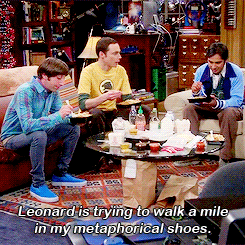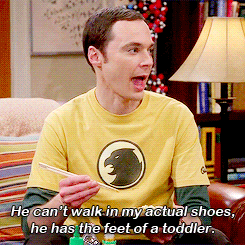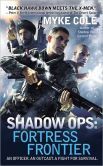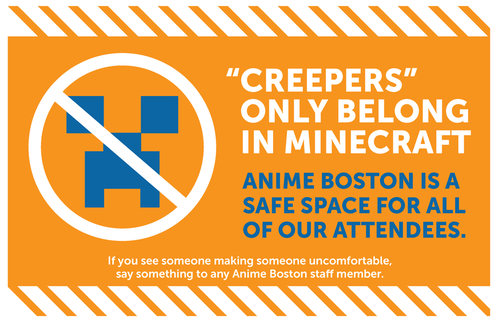Jim C. Hines's Blog, page 116
December 16, 2013
Part I
Author’s note: I’m writing this as I go. Which is nerve-wracking, because it’s totally not my normal process.
I’m hoping to have the whole thing finished and posted by Christmas, but I can’t make any promises…
#
Part 1
The first to know anything was wrong was a sentry elf named Kane. How differently the war might have turned out had she sounded the alarm a little sooner. But she recognized the lumbering shape of the living snowman as a friend to Santa and the North Pole, and thought nothing of his presence that winter morning.
By the time she saw the rage burning in his coal eyes and the armor of enchanted ice that covered his snowy body, it was too late.
But Kane was a veteran of the war with the Snow Queen, and had served at the Pole for close to two centuries. She darted forward, avoiding the first swing of the snowman’s broom. He was powerful, but slow and clumsy by elf standards. She rolled past, and by the time he recovered, she had drawn her own weapon, a blade of ice with a candy cane handle. But what use was a frozen blade against a living snowman?
She parried once, twice — by the Star, he was strong — and then the broom dropped low. Kane took advantage of the opening, driving her sword into the crack where the bottom and middle spheres of the snowman’s body joined.
Booming laughter chilled her elfin blood as the snowman bent forward, trapping the blade in place. The broom swept her feet from beneath her.
Kane looked up at the snowman who used to dance and play with the children of the world. “Why?”
He didn’t answer. The last thing Kane heard was the thumpity, thump, thump of Frosty’s broomstick.
December 13, 2013
Cool Stuff Friday
Dear Santa,
For Christmas this year I want more Fridays and more cool stuff. And also a movie deal.
Love,
Jim
Animals with Stuffed Animals.
Animated gifs of various chemical reactions. (Found on Diane Duane’s Tumblr) Because science is awesome!
Instructions for making TARDIS, Star Wars, Mario, and other Christmas ornaments out of LEGO. (Found via the Mary Sue) Um … if you need me, I’ll be digging through our LEGO supplies, looking for blue bricks.
The True Shape of Snowflakes. 3-D photos/scans of snowflakes before they hit the ground. Also see MASC’s Snowflake Showcase.
Cookie Monster in Sesame Street’s Lord of the Rings Parody.
Back when I was a kid, our paper airplanes — oh, who am I kidding. I WANT TO TURN MY PAPER AIRPLANES INTO SMARTPHONE-CONTROLLED PLANES TOO!
Photos of dogs taking their first ride to their new homes after being in shelters. (Found via David Wohlreich)
And finally, a video of a crow using a mayonnaise lid as an impromptu sled.
December 12, 2013
Christmas Bookplates and a Saturday Signing in Kalamazoo
A quick note that I’ll be hanging out and signing books at Barnes & Noble in the Kalamazoo area this Saturday from 1:00 – 3:00 p.m. The address is 6134 South Westnedge, Portage, Michigan. Hopefully I’ll see a few of you there! (Autographed books make awesome Christmas presents, you know  )
)
On a related note, if you live in the U.S. and feel like giving away one (or more!) of my books for Christmas this year, I’d be happy to send you a signed bookplate to go with it. Email me at jchines -at- sff.net. I’ll mail up to three bookplates per person, but you have to let me know today or tomorrow so I can get them in the mail by Saturday. Limited time offer, while supplies last, etc. and so on.
December 11, 2013
Nicole Stark’s Survey of Harassment Policies at Fan Conventions
After I posted my Convention Harassment Policy Starter Kit, I learned about a study Nicole Stark had done about harassment policies at fan conventions. Stark’s article is available on Google Docs, here. I’ve seen a fair amount of discussion on harassment policies and why we do or don’t need to worry about them, but this is the first example I’ve seen of a more rigorous academic survey and discussion of harassment policies. Stark gave me permission to link to her paper, and to discuss some of the highlights.
From the abstract:
This study uses content analysis to evaluate a sample of 288 fan convention websites. These conventions took place within the United States from March to November 2013. The analysis was used to determine how common sexual harassment policies are and their characteristics. This study examined both frequencies and descriptions of codes of conduct, including promoted and prohibited rules, sanctions, reporting guidelines, and the existence of a sexual harassment or general harassment policy. Less than half of the sample contained any behavioral policy at all. Those behavioral policies that were present were found to be generally informal, unstructured, and devoid of a sexual harassment policy. However, many policies contained rules that could be used in the prevention of sexual harassment. These rules, when made clear and recognizable, may work as effective policy in informal spaces. (Page 2)
Stark opens by discussing an instance of sexual harassment from New York Comic Con, and goes on to note that:
A study on sexual harassment policy in manufacturing firms revealed that an available written policy resulted in a 76 percent reduction in one year’s reports (Moore and Bradley 1997).
In other words, to anyone arguing there’s no need for a sexual harassment policy, there is actual research showing that such a policy can significantly reduce sexual harassment.
I expect some people to protest that a convention isn’t the workplace, and that’s true. There are likely to be some differences in the dynamics and effects of a harassment policy in a convention space vs. a workplace. But the underlying premise and conclusion here is pretty straightforward: “We created a written policy on sexual harassment, and sexual harassment decreased significantly.”
I assume most people would like to see sexual harassment at conventions decrease significantly as well. Ergo, creating a written policy seems like a really basic and obvious first step.
Stark’s sample comes from the costume.org website’s list of upcoming conventions. The cons were all from 2013, all located in the U.S., and included media, anime, literary, gaming, comics, relaxicons, and more. So what did she find in her study?
Of the 288 convention websites, 59.38% had no listed policy on their website in regards to behavior or code of conduct. Less than half of all websites (40.62%) had at bare minimum, a behavioral policy explaining acceptable or unacceptable actions while at the convention. These rules ranged from a basic ‘be polite’ to lengthier explanations and examples of what was acceptable and unacceptable behavior. Of the total sample, only 3.47% used the phrase ‘sexual harassment’. However, 13.88% used the word ‘harassment’, not detailing readily available distinctions between harassments, whether sexual, bullying, or annoying otherwise.
Fewer than half of conventions have a posted policy about acceptable behavior, let alone harassment. And the policy is only the starting point; what about instructions on reporting harassment and other unacceptable behavior?
Only 15.27% (44) of the 288 convention websites contained guidelines on reporting. Of the three conventions participating in Project: Women Back Each Other Up, only one employed the use of purple ribbons to indicate female staff members who were prepared to intervene and handle potential sexual harassment. Several policies listed that if there were emergencies, to dial 911 or building security. This left 84.72% (244) of the convention websites devoid of response or guidance to potential victims.
Stark goes on to recommend:
…in evidence of the language and audience in these informal spaces, the following are suggestions for a comprehensive policy at fan conventions. The policies need to be recognizable and readily available (Moore & Bradley 1997), properly enforced, include and define sanctions, train employees for prevention and response, (Harmus & Niblock 2000), detail complaint procedure (Fowler 1996), and define sexual harassment in terms that the audience understands. (Emphasis added)
I have very little to add beyond Yes. That.
I recommend anyone interested in the ongoing conversation about sexual harassment in fandom read the full study. And my thanks to Nicole Stark for letting me link to and chat about her research here.
December 9, 2013
In Which I Fanboy Over Avatar: The Last Airbender
We’ve finally finished watching all three seasons of Avatar: The Last Airbender. I’m going to go ahead and say this is one of the best shows I’ve ever watched. Here’s the official show description from the website, for anyone who’s unfamiliar with it:
Water. Earth. Fire. Air. Only the Avatar was the master of all four elements. Only he could stop the ruthless Fire Nation from conquering the world. But when the world needed him most, he disappeared. Until now…
On the South Pole, a lone Water Tribe village struggles to survive. It’s here that a young Waterbender named Katara and her warrior brother Sokka rescue a strange boy named Aang from a cavernous iceberg. Not only is Aang an Airbender–a race of people no one has seen in a century–but they soon discover that Aang is also the long lost Avatar. Now it’s up to Katara and Sokka to make sure Aang faces his destiny to save the tribe–and himself. Did we mention he’s only 12?
I don’t know how best to talk about a three-season, 61-episode show, so I’m just going to randomly celebrate some of the things that made it work so well for me.
The Characters: Almost without exception, every character has his/her own personality and story arc. The Big Bad Fire Lord was pretty much the only one who struck me as one-dimensional, and that’s partly because he barely even shows up until the very end. Everyone else felt fully human. They struggle. They make mistakes. You can connect and sympathize with almost everyone, even the villains. These are interesting people, and I wanted to spend more time with them.
The Animation: This is a beautifully animated show, from the background artwork to the various spirit creatures to the different cultural styles of dress and architecture to my particular favorite, the gracefulness of the four styles of bending. It’s gorgeous to look at.
The Joy: Aang’s backstory is incredibly painful. He’s the last of his people, a hundred years out of his time, and is tasked with saving the world. At the age of twelve. Yet he never loses his joy in the world. He jokes, he laughs, he plays, he dances. He believes in people … but not to the point of foolishness. The show hits notes of both very real pain and ridiculous silliness (poor cabbage guy), and the full range in between. That’s a hard thing to do well, and incredibly powerful when done right.
I’m putting the rest behind a cut tag, because of spoilers…
#
#
This Moment Right Here: Zuko’s journey of growth and redemption is one of the best, most powerful character arcs I’ve ever seen. If this moment doesn’t make you choke up, then YOU HAVE NO SOUL!
[image error]
Uncle Iroh: Nothing but love for pretty much every single moment he’s on the screen.
Nothing is Static: The characters grow and learn and change over the course of the series. Lessons sometimes need to be repeated, but they’re rarely ignored or forgotten. And the implications and possibilities of bending are explored. Toph discovers how to metalbend, and can use her earthbending connection to the ground to help her see. Katara learns new waterbending tricks throughout the show, including the ability to draw water from the air and plants, and even to bloodbend. We see sandbending and swampbenders and more. Instead of ignoring or glossing over the implications of the world’s magic, the show embraces them, and I love it.
The Epic Storyline: Epic fantasy doesn’t get much more epic than this. A quarter of the world’s nations wiped out. A firebender winning a century-long war of conquest. History stretching back hundreds, even thousands of years. And yet, despite the world-spanning scope, the story never loses sight of the personal, the individuals who fight and struggle and mourn and laugh and go about their daily lives.
Jet’s Death: In a lot of ways, this captures what makes the show work. Jet started out as a bad guy, and not a terribly important one. He was a secondary character, an antagonist for a few episodes here and there. But you understood where he was coming from, and you saw him change and grow. And then, at the end of his story, he dies. There was no loophole, no deus ex machina. They killed off a kid. It was the right choice for the story, and they did it, and it worked.
The Women: Aang is the main character, but his two more powerful friends are Katara the waterbender and Toph the earthbender. (Sorry, Sokka. You’re pretty badass too.) Zuko’s sister Azula is downright terrifying. Katara’s mother sacrifices her own life to protect her daughter. The old twins on Ember Isle. The bloodbender Katara meets. Suki. Azula’s friends Mai and Ty Lee. There are so many powerful female characters, and they display so many different kinds of power, from healing to ass-kicking.
No show is perfect, but this one got so much right. Highly recommended.
[image error]
December 7, 2013
Big Bang Theory’s Autism Simulation
I just posted this over on Tumblr, but wanted to share it here as well.
I’ve criticized The Big Bang Theory for things like its ongoing obsession with fat jokes, its casual sexism (OMG, girls don’t read comics/play D&D/etc), the handling of Sheldon’s autistic/OCD issues, and an ongoing sense of laughing at geeks instead of with us.
But I want to give a shoutout to something the show did recently in “The Itchy Brain Simulation.” Leonard discovered a DVD he had forgotten to return for Sheldon, and started worrying about how Sheldon would react. Because we all know Sheldon can’t let anything go, and would be completely annoying and freak out about the unreturned DVD, right? And then we the viewers can all laugh at the neurotic genius and ask why his friends put up with him.
Only it didn’t play out that way. Sheldon countered by asking why Leonard didn’t consider how annoying and difficult these things were for him. As far as I know, this is the first time Sheldon’s ever stood up for himself in this way. He took it a step further, saying he’d remain calm about the DVD … if Leonard wore an itchy sweater he had gotten as a gift until the DVD was returned.
Animated gifs ahead. (I did say this was being copied from Tumblr…)


I loved it. I love that this show is finally acknowledging that it’s not a matter of Sheldon just being annoying. His brain works differently. As annoying as he comes off to his neurotypical friends, their habits often have the same effect on him. Only he’s outnumbered, meaning he’s getting stress from multiple directions all the time. And the narration consistently sympathizes with his “long-suffering” friends.
The writers are unwilling to label Sheldon’s character autistic, but the actor says that to him, “the character of Sheldon is very autistic in nature.”
My son is autistic, so this is personal to me. Seeing Sheldon used as the butt of various jokes rings too close to some of what my son deals with at school.
So seeing Sheldon challenge Leonard to walk in his shoes, and seeing Leonard completely fall apart because he didn’t know how to cope with it, was huge.


The episode wasn’t perfect, and still had some problematic issues, but I thought this storyline was amazing, given what we’ve seen from the show in the past.
Thank you for this episode. I really hope this newfound understanding continues.
December 6, 2013
Cool Stuff Friday
I don’t know about you, but I’m tired and ready for some things to smile about.
Amateur Photographer Shoots Largest Ever True Color Photo of the Night Sky. Composed of 37,000 photographs, this is “a 360-panoramic view of the sky taken by trekking 60,000 miles across the western United States and South Africa…”
High-resolution, zoomable and navigable version is here.
Best #BisexualFacts. Apparently Bisexual Facts was a thing on Twitter, and resulted in a number of humorous “facts” … which have now been turned into lovely images, suitable for framing or giggling over. Though it’s sad that none of the tweets were attributed in the images. (Context for these comments: http://www.xojane.com/fun/the-sheer-unadulterated-joy-of-bisexualfacts.)
Best #BisexualFacts, Part 2.
Australian pigeons team up to use a public water fountain. Because Australia! (Link from Laura Anne Gilman)
Also in Australia, scientists basically brought a heart back to life without a body. I don’t know whether Australia is the most awesome place in the world, or the most terrifying. (And yes, I know the correct answer is probably “both.”)
Image gallery from the Hubble telescope. Wow…
December 5, 2013
Jim Hines, Recruiter of PoC
Yesterday afternoon, Twitter called my attention to the following comment on a listserv of SF/F conrunners:
“Instead of insulting us, [Hines] could be using whatever influence he has in social media to help recruit more PoC into our circles. They need to know they’d probably be much more welcome here than they might be elsewhere. (After all, many of us would love to befriend extra terrestrials or anthromorphs.)”
I’m told that others on the listserv quickly pointed out how messed-up it was to compare people of color to aliens and monsters, and that the individual apologized, so I don’t want to spend much time rehashing that part of the comment. I doubt it was deliberately intended to be racist or offensive. But I think it’s worth emphasizing that this kind of unintentional and unthinking hurtfulness is, in my opinion, a big part of our problem.
I did post a snarky and sarcastic comment on Twitter in response to that “recruiting” comment:
Knock, knock. “Hello, I’ve come to spread the good news about fandom, where we love aliens, monsters, and even PoC!”
For the record, I consider myself part of fandom. I love our community. I love the friends I’ve made here. I love this part of my life. But I’m not going to ignore the serious problems we continue to struggle with when it comes to sexism and racism and inclusiveness and so on. And when individuals made racist remarks, or conventions botch their handling of sexual harassment, or another convention chair congratulates themselves on their “colorblindness” when their convention is 97% white, I’m going to keep pointing that out.
On Twitter, I was accused of driving people from SF/F fandom, and making our community look bad. I admit to being rather baffled by this. I thought things like conrunners making ignorant racist remarks were what made the rest of us look bad, not the acknowledgement and criticism of such remarks.
This bugs me a lot. It resonates with the dynamics I’ve seen in abusive families, where the most serious crime isn’t the abuse, but talking about the abuse outside of the family. So yeah, this hits a big old button for me.
Then there’s the complaint that I’m not using my “influence” to recruit other groups into fandom. Which got me thinking more seriously about the suggestion that hey, maybe I should work to try bring more diverse fans into fandom.
I’m sorry, but what the hell do you think I’ve been trying to do???
There are a lot of ways to try to make fandom and conventions more welcoming, and to try to encourage others to join our community. Which do you think is actually going to make people feel wanted — comparing them to aliens and monsters, or publicly denouncing the people who make such ignorant and hurtful remarks? You’ve got voices in fandom saying black people don’t come to cons because those people don’t like SF/F. Then you’ve got voices in fandom saying, “That’s racist bullshit, we don’t all believe that, and we as a community need to do better.”
I know which category I’d prefer to belong to.
Some of the ways I see to try to build a more welcoming community include:
Listening to people who feel excluded or unwelcome, and acknowledging their experiences.
Challenging racist and sexist statements. Even the “unintentional” ones. Both online and in person.
Encouraging conventions to take steps to be more actively welcoming and inclusive and safe.
Examining my own racism, sexism, homophobia, and general ignorance, and trying to learn to do better.
Acknowledging when I screw up.
Publicly acknowledging and applauding the conventions and people who get it right. (Example: Readercon’s follow-up to their sexual harassment screw-up. Yes, the initial response was a mess. But their follow-up should be a model to conventions everywhere.)
Using my platform as a moderately well-known fantasy author to encourage others to recognize and push back against sexism, racism, homophobia, and so on.
I’m not asking for cookies, and I’ll be the first to admit I don’t always get it right. I’ve messed up plenty of times. But yeah, my goal is, in fact, to make fandom a more welcoming place, and help it become a community that a broader range of people will choose to be a part of. Not by going door-to-door so I can drag a token black woman to my local con, but by trying to address the underlying problems making so many people feel unwelcome.
You know what isn’t going to encourage people to be a part of fandom?
Pretending we don’t have any problems, and that things like our “colorblindness” and “genderblindness” have resulted in a utopia where all groups feel welcome.
Using our own privileged experiences to invalidate the lived experiences of others. (“Well, as a 39-year-old white dude, I haven’t experienced any sexism or racism in fandom…)
Continuing to make the same mistakes again and again. (How many times do we have to talk about conventions failing to address accessibility or create harassment policies?)
Reacting to criticism with an aggressively defensive “Us vs. Them” response.
Worrying more about burying/denying/minimizing evidence of racism or sexism or harassment than about the fact that these things keep happening in the first place.
Dismissing criticism as ignorance and maliciousness (which provides a convenient excuse to ignore said criticism).
Pointing to what progress we’ve made to shut down discussion of the work we still have to do.
I’m rather fond of this quote from Antoine de Saint-Exupéry:
“If you want to build a ship, don’t drum up the men to gather wood, divide the work and give orders. Instead, teach them to yearn for the vast and endless sea.“
There are a lot of good people trying to make fandom a better and more welcoming place. Some of them are on that listserv I mentioned in the beginning, where I’m told there has been some good and productive conversation lately. I’ve worked with some great people at cons and on panels. I’ve linked to some of them online. These are folks I believe are working to bring a broader range of people into fandom. Not by dragging or ordering them to attend, but by trying to acknowledge and fix our flaws, and to reshape fandom into a thing more people yearn to be a part of.
December 4, 2013
Shadow Ops: Fortress Frontier, by Myke Cole
 I reviewed Myke Cole‘s first book, Shadow Ops: Control Point, back in January of 2012. Shadow Ops: Fortress Frontier [Amazon | B&N | Mysterious Galaxy] is the sequel, and if you liked the first book, I suspect you’ll like this one even more.
I reviewed Myke Cole‘s first book, Shadow Ops: Control Point, back in January of 2012. Shadow Ops: Fortress Frontier [Amazon | B&N | Mysterious Galaxy] is the sequel, and if you liked the first book, I suspect you’ll like this one even more.
Book two picks up where the first one left off, but switches to the perspective of Colonel Alan Bookbinder, a military man more comfortable behind a desk than in actual combat. He’s a quiet, nervous, even timid man, but when he comes up latent (displaying magical abilities), all that changes. He’s drafted into the Supernatural Operations Corps, and ends up on the FOB Frontier, another world filled with magic and goblins and more.
While “write what you know” is generally a silly rule, Cole shows how it can work, using his own military background to create a solid, believable military fantasy. One of my favorite parts of the book was watching Bookbinder learn to move through his fears and develop his own leadership abilities.
Oscar Britton, the p0rtamancer protagonist from book one, also gets some point of view time in the book. It can be odd switching perspectives after spending so much time with one character, but I think it worked here. It was important to see what he’s been doing since book one, and how those events have changed him.
I enjoyed meeting the naga, learning more about the creatures of the Source, and seeing how other nations are dealing with magic and this fantastic frontier. And I appreciate that Cole went back to address the potentially deadly mess Oscar Britton left behind in book one.
In some respects, this is very much a middle book. (The third book, Breach Zone, comes out in January of 2014.) While relatively self-contained, the larger story arc about how people with magical powers are treated and mistreated, as well as the secrets of the magical frontier — “the Source” — are left unresolved. Indeed, this book ups the stakes in a number of ways. Assuming book three is the last one, I expect quite the crescendo.
You can read an excerpt of the first book at Tor.com, here. If you like the excerpt, you’ll probably like the first book. If you liked the first book, you’ll almost certainly enjoy the second.
December 2, 2013
SF/F Convention Harassment Policy Starter Kit
I’ve written many times before about reporting sexual harassment in SF/F, and about the problem of harassment at SF/F conventions. While I think it’s important to talk about the problem, and to hold conventions and individuals accountable when they mess up, it’s also important to recognize the things folks do right, and to help groups improve. To that end, and with the help of some friends, I’ve tried to put together a “starter kit” for conventions wanting to create or improve their harassment/safety policy.
My thanks to Rose Fox, Cheryl Morgan, Kathy Chung, and Seanan McGuire for their comments and suggestions.
#
1. What’s the goal of a convention harassment policy?
To help all attendees and staff feel welcome, valued, and as safe as possible.
To define and discourage harassing, abusive behavior.
To make it as safe and simple as possible for people to report harassment, if necessary.
To clearly establish for staff and attendees how reports of harassment will be handled.
To set fair consequences for such behavior.
The existence of a clear, published harassment policy sends a message. So does the lack of such a policy. Harassment is a real and ongoing problem, whether you’re talking about a huge media-oriented con or a smaller “professional” event. Choosing not to publish a policy on harassment can suggest that your event doesn’t take sexual harassment seriously, and may turn a blind eye to such incidents.
Defining harassing behavior sets a clear expectation of what will and won’t be tolerated, and can help to prevent common excuses like, “He’s just socially awkward and didn’t know he was harassing her.”
A sexual harassment policy lets attendees and volunteers know how seriously your event intends to respond to incidents. Having a written policy in place beforehand also makes it simpler for people to know how to report, and gives staff the information they need on responding to reports.
2. What should a convention harassment policy include?
The Geek Feminism Wiki has several sample harassment policies that may be helpful to review. No one policy is appropriate for all conventions, but typical policies should include:
A definition of harassment.
A clear statement that harassment is not tolerated at your event.
Instructions on how to respond to and report harassment.
Information on how staff will respond to reports of harassment.
A statement of the potential consequences for anyone choosing to harass others.
Cheryl Morgan suggested the following, which I hadn’t considered, but agree with: “The policy should make it clear that the victim’s wishes will be respected. It is better to have incidents reported and to take no action, than to have the incidents not reported because the victim has reasons not to want action taken.”
From a sample policy at the Geek Feminism Wiki:
“Harassment includes offensive verbal comments [related to gender, gender identity and expression, sexual orientation, disability, physical appearance, body size, race, religion, [your specific concern here]], sexual images in public spaces, deliberate intimidation, stalking, following, harassing photography or recording, sustained disruption of talks or other events, inappropriate physical contact, and unwelcome sexual attention. Participants asked to stop any harassing behavior are expected to comply immediately.”
ISFiC’s harassment policy includes the following statement of potential consequences:
“Windycon and ISFiC reserves the right revoke the membership of anyone failing to conform to the letter and spirit of these policies, those of our hotel, and the laws of the City of Lombard and the State of Illinois.”
Readercon’s website includes a list of possible consequences, up to banning the harasser from the con and from future events. The same page provides information on how to report harassment, as well as a link to their internal procedures for handling reports.
3. Where and how should the harassment policy be published?
On the convention website.
In the program book.
At the event.
In internal (con staff) material.
The nice thing about a website is that you have more room to work with. You can lay out the full details of your policy, as Readercon has done. Many people will check out your website when deciding whether or not to attend your event. As many in the SF/F community saw with the run-up to the 2013 World Fantasy Convention, if your website lacks a harassment policy, people will notice.
The program book should also include your convention’s harassment policy. If you don’t have as much space, you might choose to print a summary with a link to the website for more information. But the program book should include the main points.
Of course, lots of people don’t read the program book, which is why it’s a good idea to mention the harassment policy elsewhere. Reference it during opening ceremonies. Post flyers at the convention. (There are some slightly blurry sample flyers from CONvergence here.) Include a copy of the policy at the registration desk
If you have a central phone number and/or email address for reporting harassment, make sure that’s publicized as well.
4. What should the convention do if someone reports harassment?
I’m not a conrunner, and have less information about the behind-the-scenes operation of conventions, so I’m drawing heavily from the Geek Feminism Wiki’s page on how to respond to reports of harassment and input from friends for this section. (Any mistakes or omissions are my own.)
Before the Convention Even Starts:
Arrange for convention staff to be trained on how to handle reports of harassment. If only certain individuals are trained to respond to these reports, make sure all volunteers know who those people are and how to contact them.
Establish a clear chain of communication up to the person in charge of safety concerns (usually the safety chair or convention chair).
If possible, plan to have at least two people on call at all times who are able to handle reports. This allows one person to focus on helping the person who was harassed while the other addresses the needs of the convention as an entity and the other attendees.
Make sure staff and volunteers are easy to recognize (most cons have badge ribbons, staff T-shirts, and/or other identifiers), and that they know what to do if someone reports harassment.
Respect the reporting individual’s needs and wishes.
If there’s a risk to anyone’s physical safety, consider contacting hotel security or police.
Find a relatively safe and private place to talk to the reporting individual.
Document as much as possible, including the time of the event, names and badge numbers, location, etc.
Share the information with the convention’s powers-that-be.
Investigate quickly, and follow up with the harasser.
Enforce any appropriate consequences.
After the Convention:
Solicit feedback. Ask attendees and volunteers what worked, and what problems they encountered.
Follow up on any unresolved reports.
Some of this seems obvious, such as finding a safe place to talk. But there have been had instances where someone was assault at a convention, and the con staff basically interrogated her in the middle of the lobby. Don’t do that.
If there’s a problem with a particular individual, the con staff need to be aware of this. If additional reports come in while an incident is being investigated, the fact that this isn’t a first report can affect how staff respond.
Finally, if you have a policy, follow it. Many of you are probably familiar with the incident at Readercon where they received multiple, verified reports of an individual harassing others, but responded in a way that ignored the consequences set out in their own policy. This damaged the trust of attendees and resulted in the entire Readercon board resigning. (Readercon has since done a great deal of work to try to repair the damage done by this decision.)
5. Where can I find examples of convention harassment policies?
Geek Feminism Wiki Sample Anti-Harassment Policy
Readercon Code of Conduct and Policies
Wiscon Harassment Policy (Under “Legal Matters”)
Con Anti-Harassment Project Database
San Francisco Science Fiction Conventions, Inc. – Code of Conduct/Anti-Harassment Policy
Windycon/ISFiC Harassment Policy
FOGcon Harassment Policy
Continuum Code of Conduct and Harassment Policy
SFWA Statement on Sexual Harassment (Not a convention policy, but related)
There are many more conventions with good harassment policies out there, and more groups are creating and publishing such policies each year. But these should be enough to get you started thinking about how to write or update your own.
6. Do harassment policies really work?
Yes.
It’s true that publishing a policy doesn’t guarantee your event will be harassment-free. Just like laws against theft and vandalism didn’t stop someone from smashing the window to my wife’s van a few years back and stealing everything they could grab. However, the existence of those laws sends a clear message about what will and will not be tolerated in the community, and establishes consequences for anyone choosing to violate those rules.
Creating and publishing a harassment policy for your convention will help reduce the behavior, let your members know you take harassment seriously, and help you to respond more effectively when it does happen.
#SFWApro






